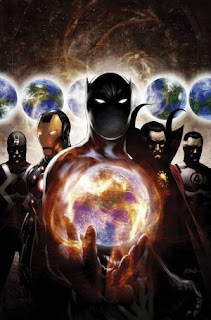Marvel's Jessica Jones hit Netflix last weekend. Like last spring's Daredevil it earns its MA rating, but what makes this show great is not its blend of realism and fantasy in fight scenes or the fairly sexy content. I would argue that this show has layers that make it interesting in a few ways.
On the surface, the character-based conflict is compelling enough. Jessica, played by Krysten Ritter, is a private investigator with a slight drinking problem who's given up the idea of being a superhero despite her super-strength. She's forced back into the game as a man named Kilgrave resurfaces. Played by David Tennant, Kilgrave is a great villain because he actually believes what he does is okay. Since childhood he could force people to do exactly what he wanted just by uttering the words in earshot. Growing up like this twisted his worldview making him believe he can win Jessica's affection even though he seems to leave a wake of pain and destroyed lives and controlled her for months. He's directly responsible for darkest period of her life, but he's back because wants to show her he loves her. Jessica, after giving up therapy for the comfort of whisky, is driven to stop him when she finds out he's not only still out there, but may have taken control of a younger woman, doomed to whatever fate Kilgrave dictates.
Being a Marvel property, there is of course plenty fan-service. I'll go through the big references. Luke Cage, who in the comics eventually has a child with Jessica and marries her, is the love interest in the show. The first time you see him, he's wearing a yellow t-shirt, the comic character's iconic garb, unless you count his original straight-outta-disco leisure suit look. He comes already powered with invulnerable skin exactly as in the comics. Though Kilgrave, known as Purple Man in the comics, is not entirely purple is usually wears purple suits, and when Jessica is hunting him there are often purple lights signaling his trail and flashbacks to her time under his control are sometimes shot with a purple filter. His skin briefly adopts a purple hue later in the series after an attempt to enhance his power. Other references were much more subtle. Jessica is aided by a police officer named Will Simpson, who secretly participated in a military experiment is shown taking red, white and blue pills that alter his adrenaline, boosting his strength but making him overly aggro. In the comics, a Captain America villain named Frank Simpson underwent an experiment to recreate Cap's powers and also takes red, whit and blue pills. I missed this because I'm used to Nuke's face tattoo of the American flag. Another one I missed is Jessica's sister by adoption Patsy Walker, child-star turned martial arts heroine, Hellcat. In the show she goes by Trish, but was called Patsy as a child actor. She is also shown training in martial arts in a private lesson. In the last episode, Rosario Dawson reprises her role as Claire Temple from Daredevil. Known as Night Nurse in the comics, she provides medical care to vigilantes. True to character, she aids Jessica and Luke and they trust her to keep their secrets.
 |
| Luke Cage, Patsy Walker, and Nuke as they appear in the comics. |
Jessica Jones is very much a departure from your traditional superhero story. As much as I love the genre the market is becoming more and more saturated with superhero and comic stories, and not all of it is distinct. The content must diversify to stay fresh. Being Marvel's first property with a female lead is a great start. Jessica and Luke both operate discretely and never use code names, costumes or other familiar tropes. Jessica even rejects the costume and identity suggested by Trish in a flashback. There're no origin scenes or talk of destiny, just driven characters trying to stop a man from hurting innocent people.
On another level Jessica Jones is a positive feminist example. She's independent, never plays the victim, and is not afraid to speak her mind. By not adopting a superhero identity she rejects societal expectations and refuses to have her role defined for her. In the show doors are often used as symbols either for protection or as barriers. In the opening scene, she breaks her door literally throwing out a client who started to get rough with her. Men who enter her office (unaware of her superior strength) always point out the broken door and insist she needs it fixed being a woman in the city. Jessica couldn't care less as even after it's fixed she breaks it again in a later fight. Also, whenever Jessica encounters a locked door in her investigations she simply breaks it with her bare hands rendering them useless as a barrier. The phrases "behind closed doors" and "the glass ceiling" come to mind, which describe how women historically have been held back in business. Jessica could just leap right through that glass ceiling.
















